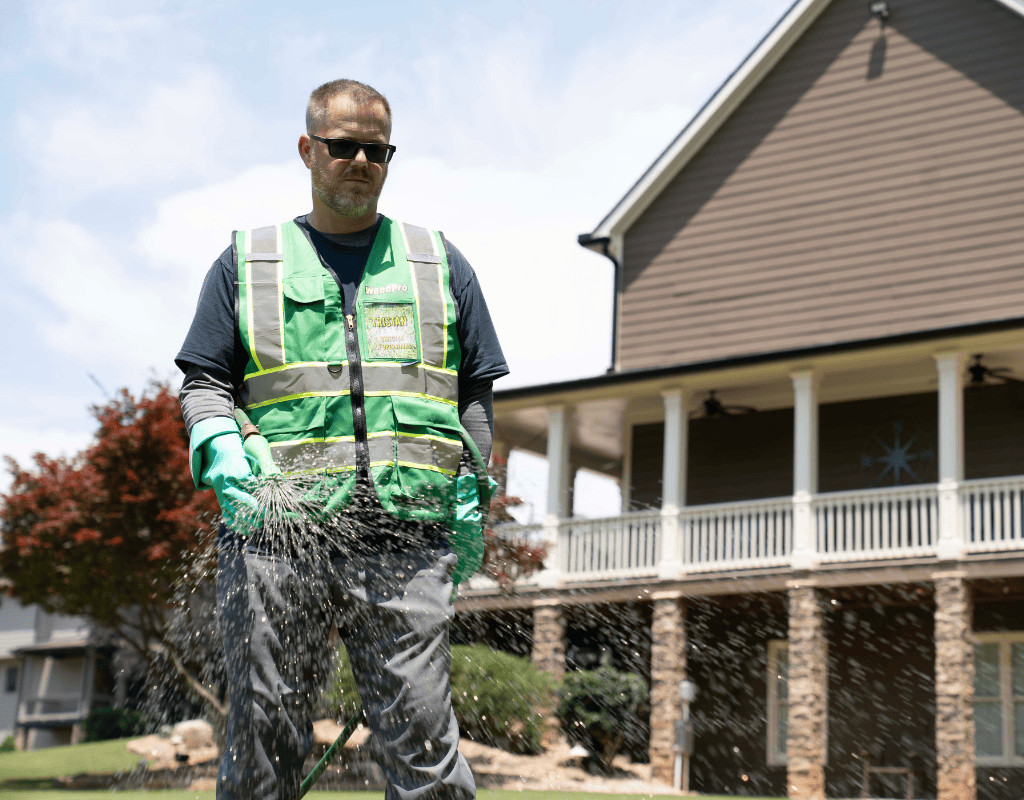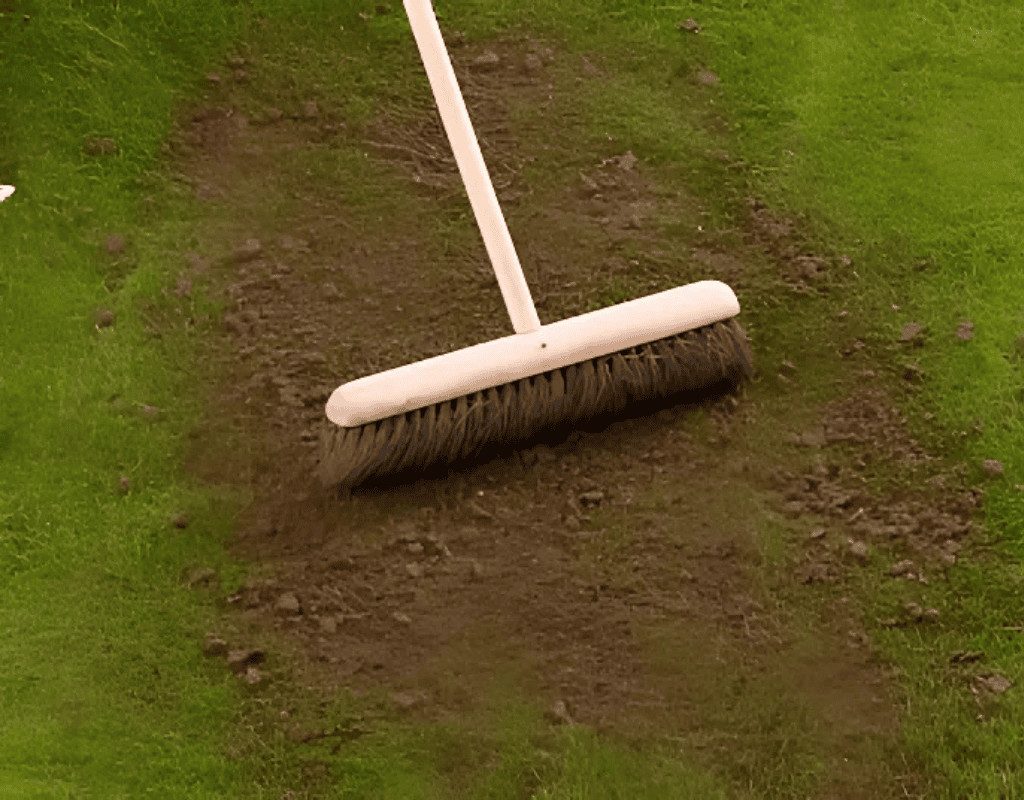Frequently Asked Questions
How to take care of my lawn?
Taking proper care of your lawn involves regular mowing, weed control, aeration, fertilization, overseeding, and pest management services to maintain a healthy, lush appearance.
How do you take care of a lawn for beginners?
Taking care of a lawn for beginners involves regular mowing, controlling weeds, aerating the soil, applying fertilizer, overseeding, and managing pests like fire ants and mosquitoes. Irrigation services can also help maintain a healthy lawn.
How to care for lawn grass?
Proper lawn grass care involves regular mowing, weed control, aeration, fertilization, overseeding, and pest management to maintain a healthy and lush lawn.
What tools are essential for lawn care?
The essential tools for lawn care include a lawn mower, edger, weed trimmer, aerator, spreader for fertilizer and seed, and sprayers for weed control, pest management, and irrigation system maintenance.
How often should I water my lawn?
The frequency of watering your lawn depends on various factors, such as the climate, soil type, and grass species. As a general guideline, most lawns in Sandy Springs, GA require watering 1-2 times per week during the growing season to maintain optimal health and appearance.
What is the best time to fertilize?
The best time to fertilize your lawn is typically in the fall, around September or October. This is when grass is actively growing and can best absorb the nutrients to maintain healthy growth throughout the year.
How to identify lawn pests effectively?
Identifying lawn pests effectively involves closely inspecting your lawn for signs of damage, such as discolored or wilting grass, and looking for the presence of insects or other pest activity. Consulting with a professional lawn care expert can also help accurately diagnose and address any lawn pest issues.
What are common lawn care mistakes?
Common lawn care mistakes include not mowing at the proper height, overwatering, failing to aerate the soil, neglecting to fertilize regularly, and not controlling weeds, pests, and fire ants effectively.
How to choose the right grass type?
Choosing the right grass type for your lawn depends on factors such as climate, soil conditions, and your desired maintenance level. Consider grass varieties that thrive in your local environment and align with your lawn care needs.
What is the ideal mowing height for grass?
The ideal mowing height for grass is typically 3-4 inches to maintain a healthy, lush lawn.
How to aerate my lawn properly?
Aerating your lawn properly involves using a core aerator to punch holes in the soil, allowing air, water, and nutrients to better penetrate the grass roots, promoting healthy growth.
What are the benefits of lawn mulching?
The benefits of lawn mulching include improved moisture retention, weed suppression, and enhanced soil fertility, leading to a healthier and more vibrant lawn.
How to control weeds in my lawn?
Controlling weeds in your lawn involves a combination of mowing, hand-pulling, applying selective herbicides, and maintaining a healthy, dense lawn through proper fertilization and aeration.
What nutrients does my lawn need?
The nutrients your lawn needs are nitrogen, phosphorus, and potassium. These essential nutrients promote healthy grass growth, strong root development, and lush green color.
How to improve lawn drainage issues?
Improving lawn drainage issues can be achieved by installing drainage systems, grading the lawn to direct water flow, and aerating the soil to enhance water absorption.
What is the best way to overseed?
The best way to overseed is to thoroughly prepare the lawn by aerating the soil, spreading the seed evenly, and keeping the area moist until the new grass germinates and becomes established.
How to prepare my lawn for winter?
Preparing your lawn for winter involves a series of steps to ensure it remains healthy and lush. This includes aerating the soil, applying a pre-emergent herbicide to control weeds, and fertilizing the lawn to promote strong root growth.
What are signs of a healthy lawn?
Signs of a healthy lawn include lush, green grass, few weeds, even growth, and proper irrigation. The lawn should also be free from pests and diseases, indicating effective pest and disease control.
How to fix bare spots in grass?
Fixing bare spots in the grass typically involves aerating, overseeding, and applying a lawn repair mix or topsoil to the affected areas. This can help encourage new grass growth and fill in the bare patches.
What is the role of lawn thatch?
The role of lawn thatch is to provide a protective layer between the grass and soil, helping to retain moisture and suppress weed growth.
How to maintain a Bermuda grass lawn?
Maintaining a Bermuda grass lawn involves regular mowing, fertilization, and weed control. It's crucial to mow at the proper height, apply the right fertilizer, and use effective weed control methods to keep the lawn healthy and vibrant.
What is the best irrigation method?
The best irrigation method depends on factors such as the size of the lawn, water availability, and the specific needs of the grass. Automated sprinkler systems or drip irrigation are often the most efficient options for maintaining a healthy lawn.
How to prevent lawn diseases?
Preventing lawn diseases involves proper lawn care practices, such as regular mowing, adequate watering, timely fertilization, and prompt treatment of any observed issues. This helps maintain a healthy, resilient lawn and minimize the risk of disease outbreaks.
What are the advantages of professional lawn care?
The advantages of professional lawn care include consistent weed control, proper lawn aeration, timely fertilization, overseeding for thicker grass, effective pest and fire ant control, and reliable irrigation services to maintain a healthy, lush lawn.
How to create a lawn care schedule?
Creating a lawn care schedule involves determining the appropriate frequency for mowing, weed control, aeration, fertilization, overseeding, and pest management to maintain a healthy lawn throughout the year.
What is the impact of soil pH on grass?
The soil pH greatly impacts the growth and health of grass. Grass thrives in slightly acidic soil with a pH range of 6.0-7.0. Excessively acidic or alkaline soil can lead to nutrient deficiencies, stunted growth, and susceptibility to weeds and pests.
How to transition from cool to warm season grass?
Transitioning from cool to warm season grass involves gradually overseeding the lawn with warm-season grass species, while managing the cool-season grass through proper mowing, irrigation, and weed control.
What are the best practices for lawn maintenance?
The best practices for lawn maintenance include regular mowing, weed control, lawn aeration, fertilization, overseeding, pest control, fire ant control, mosquito control, and proper irrigation management.

